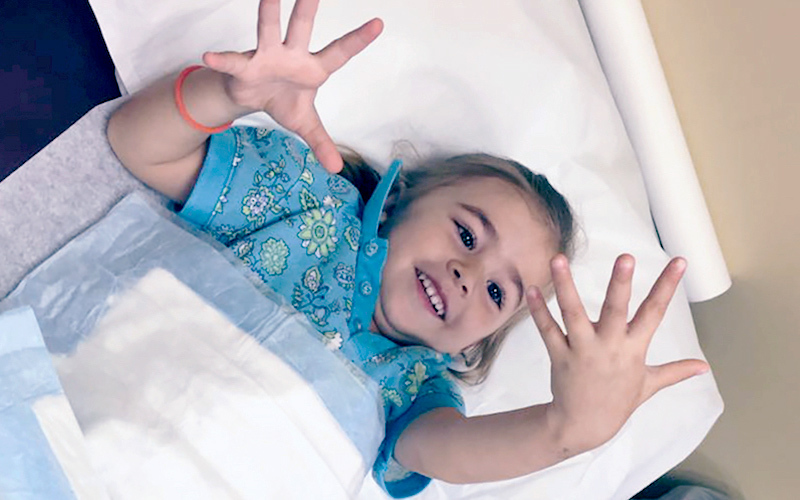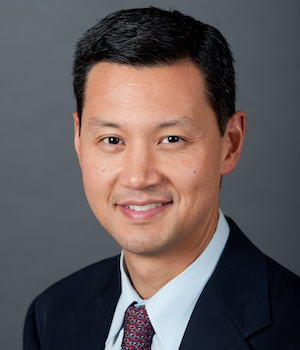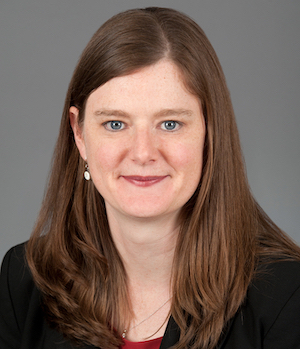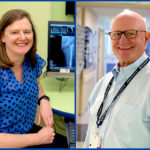Fingers, shoulders, and everything in between: Three upper extremity surgeons and their relentless quest for solutions

It’s 6 a.m. and the surgeons in the Hand and Orthopedic Upper Extremity Program at Boston Children’s Hospital have logged on for their weekly meeting. “We meet first thing every Monday to discuss our complex cases,” says orthopedic surgeon Dr. Carley Vuillermin. “It gives us a chance to talk through treatment options for our patients with challenging cases.”
Dr. Vuillermin and Dr. Andrea Bauer joined the Hand and Orthopedic Upper Extremity Program in the mid 2010s, effectively doubling the program’s size. Before then, the surgical team consisted of Dr. Peter Waters and Dr. Donald Bae.
Dr. Waters led the program and its expansion for over 30 years, training his hand-picked surgical team to continually push for solutions to their patients’ most complex problems. He stepped down from this role in July and Dr. Bae became the new director of the upper extremity program.
At a recent Monday-morning meeting, Drs. Bae, Bauer, and Vuillermin reflected on Dr. Waters’ legacy, the culture of continuous growth he created, and their shared vision for the future.
What lasting influence has Dr. Waters had on your practice?
Dr. Bauer: As a physician and a surgeon, Dr. Waters’ approach is, ‘this problem is solvable.’ He is never OK saying, ‘someone else is going to figure this out,’ or ‘that’s just the way this child is going to be for the rest of their life.’ He is determined to solve problems that other people think are unsolvable. There’s a sort of relentlessness in his approach that we’ve inherited — when I’m treating a child with a complex condition, I’m looking for ways to make their problem solvable.

Dr. Bae: I remember doing a very complex forearm reconstruction with Dr. Waters when I was a trainee. The case involved taking a bone from the leg and putting it in the forearm, then reconnecting all the muscles, nerves, blood vessels, tendons, and ligaments. It was a very technically demanding operation and when it was over, Dr. Waters told me how much thinking and planning he had done prior to the procedure. There was so much tireless preparation before the operation even started. That’s part of how he trained us, and it has become a deeply ingrained in how we practice.
Dr. Vuillermin: Dr. Waters established pediatric upper extremity care as a specialty. While many programs focus just on the hands, we focus on the entire upper extremity: everything from the fingers to the shoulder. It pushes us to take a multifaceted approach to our patients, and has enabled me to specialize in complex upper limb lengthening and reconstruction.
What makes Boston Children’s Hand and Upper Extremity Program unique?
Dr. Bauer: We are one of the largest pediatric upper extremity programs in the country, so we can team up when needed. For instance, Dr. Bae and I have both operated on patients with bilateral hand deformity, each of us working on one of the child’s hands at the same time. This drastically reduces the amount of time these patients are under general anesthesia. And patients with routine issues such as trigger thumb or a fracture can get treated much sooner thanks to the size of our program.

Dr. Bae: The fact that there are three of us also enables us to develop expertise in a specific area of the upper extremity. You can see that in the way Dr. Bauer has specialized in brachial plexus injury and nerve repair and Dr. Vuillermin has specialized in limb lengthening and reconstruction. The culture here is grounded in proven surgical principles while also encouraging us to try new things.
Dr. Vuillermin: I’ll add that Dr. Bae, through his interest in sports injuries of the upper extremity, has refined a surgical technique for athletes with osteochondritis dissecans of the elbow. He also launched a national registry of congenital upper limb differences that is helping advance the field by providing researchers a more accurate picture of the conditions we treat.
In addition to what Drs. Bauer and Bae have said about the strengths of the program, being part of Boston Children’s means we have access to a truly diverse group of specialists and great depth of resources. It’s another reason we can treat really complex patients.
When you look ahead to the future, what are you most excited about?

Dr. Vuillermin: I’m excited to work in partnership with this team. Just as Dr. Waters established pediatric upper extremity care as a specialty, we are each now developing our own pediatric upper extremity sub-specialties. It’s a nice generational evolution. I love the fact that we work together and help each other grow.
Dr. Bauer: I’m looking forward to building on Dr. Waters’ legacy of comprehensive brachial plexus care. He laid a foundation of brachial plexus research that’s now taking place around the world. I’m building on those partnerships — locally, nationally, and internationally — to take our knowledge and treatment of brachial plexus birth injuries and shoulder dysplasia to the next level.
Dr. Bae: I think that together, we will continue to expand the program. That’s a credit to our mentors, but also a credit to the team. If you take talented people and put them in a place where they can grow, let them flourish, things are just going to get bigger and brighter and better. Between our shared interests and specialty interests, we have what we need to maintain high quality for our patients while we push upper extremity care forward in a number of areas.
Learn more about the Hand and Orthopedic Upper Extremity Program.
Related Posts :
-

Limb-lengthening surgery: A look at the pros and cons
Limb length discrepancies, a leg or arm that’s shorter than the other, can occur for a number of reasons. ...
-

Brachial plexus birth injury: Harper’s right arm
When Harper Jane Stalker was born with a limp, unmoving right arm in 2016, her parents had never heard of brachial ...
-

The mystery of Jane’s left shoulder: Acute flaccid myelitis
When 5-year-old Jane Morehead tumbled off her bike in May 2017, it didn’t seem like a big deal. Jane’s ...
-

Study: Children with upper limb differences have better emotional health
Children born with upper limb differences face unique challenges in life. Conditions can range from failure of fingers to separate ...





